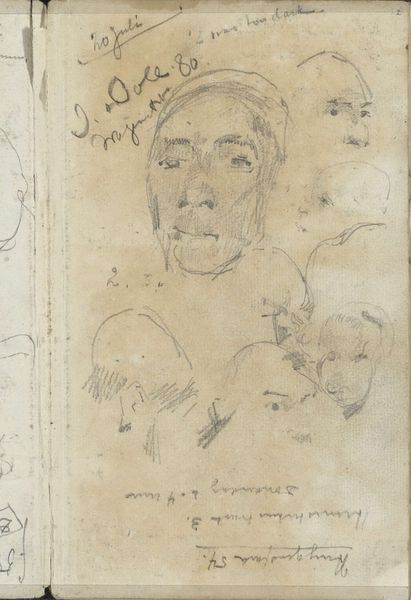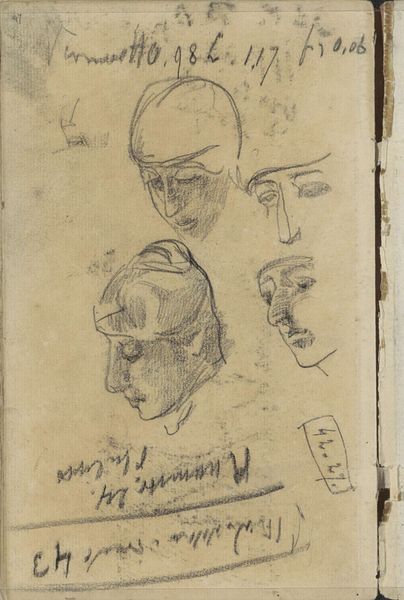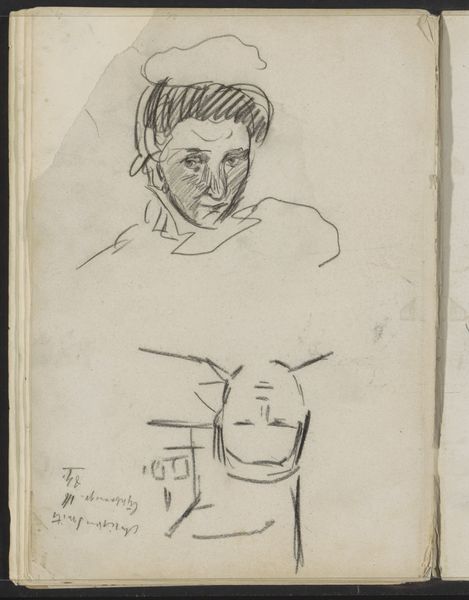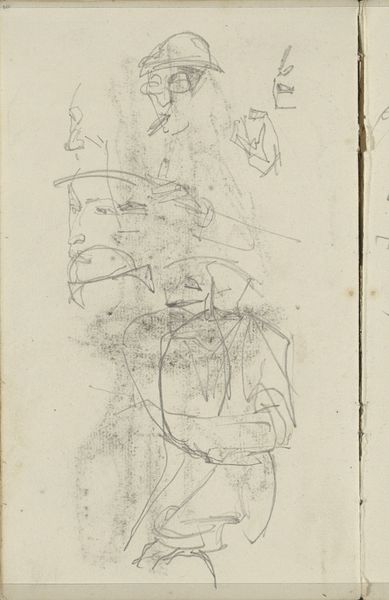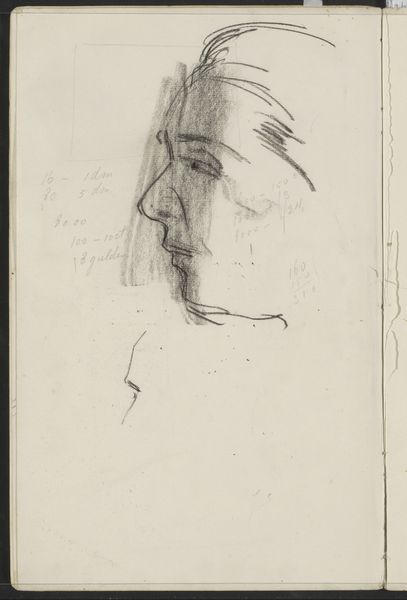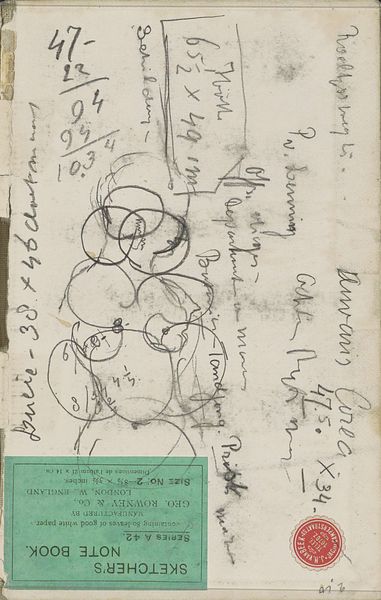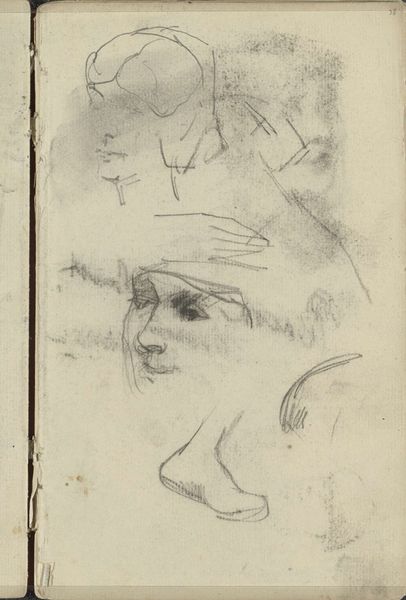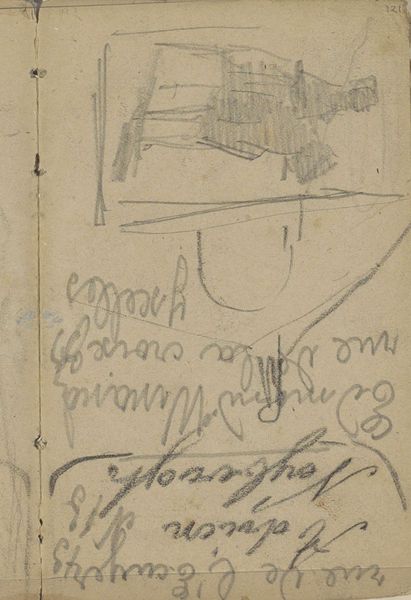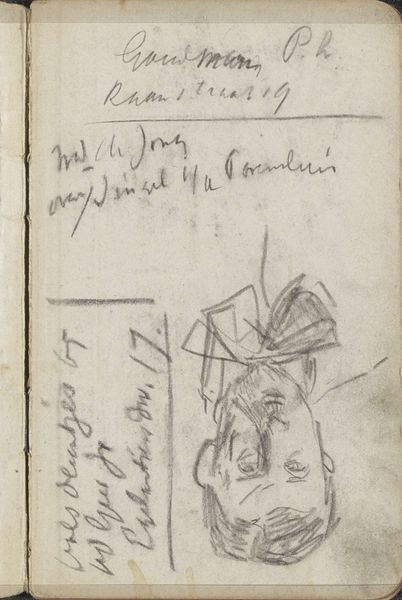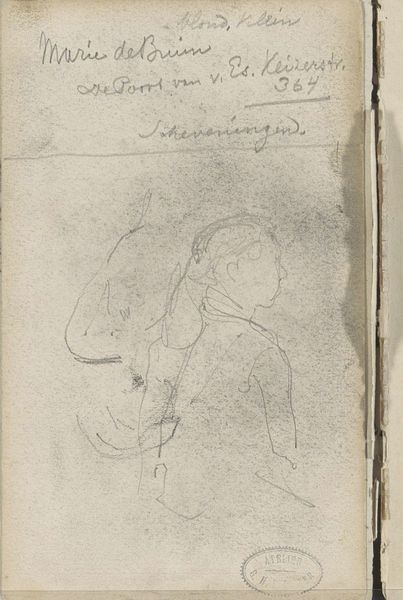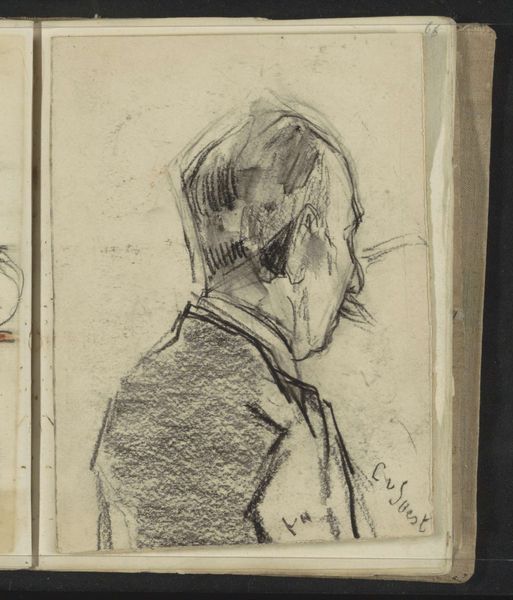
drawing, paper, pencil
#
portrait
#
drawing
#
toned paper
#
quirky sketch
#
dutch-golden-age
#
impressionism
#
sketch book
#
figuration
#
paper
#
personal sketchbook
#
idea generation sketch
#
sketchwork
#
sketch
#
pen-ink sketch
#
pencil
#
sketchbook drawing
#
storyboard and sketchbook work
#
sketchbook art
Copyright: Rijks Museum: Open Domain
Editor: So, this is George Hendrik Breitner's "Two Women's Heads," made between 1884 and 1886. It's a pencil drawing on paper and it feels very immediate, like a glimpse into the artist's sketchbook. The overlapping sketches and handwritten notes create such a sense of intimacy. What do you see when you look at this work? Curator: Immediately, I'm struck by the contrast between the clearly defined features of the lower face and the more ephemeral quality of the upper one. Breitner masterfully uses line weight to differentiate these two states. Notice how the lines defining the lower face are thicker, creating a sense of presence. This is interesting to observe. Editor: I see what you mean. The lower face seems more grounded, almost finished, while the upper one feels like an idea still being explored. What's the effect of that layering? Curator: Layering contributes to the sense of dynamism and becoming, the effect of continual revision. Are these women being portrayed or is the form and process what we should examine more closely? The paper itself is a surface where thoughts and observations coalesce. It's also worth noting the economy of line throughout. Editor: Economy of line? Curator: Precisely, Breitner achieves a remarkable likeness with minimal means, it is pure reduction of form, line describing volume. There's an honesty in the unfinished quality that feels very modern. The inscription too should not be discounted in understanding the intrinsic elements within the drawing. Editor: That’s a great point! Thinking about it formally, the composition is so much more than just two portraits; it’s about line, form, and the tension between finished and unfinished. It shows that the meaning arises out of his treatment of it, of line and of paper. Curator: Precisely, a complex interplay indeed, where observation and intention meet.
Comments
No comments
Be the first to comment and join the conversation on the ultimate creative platform.
